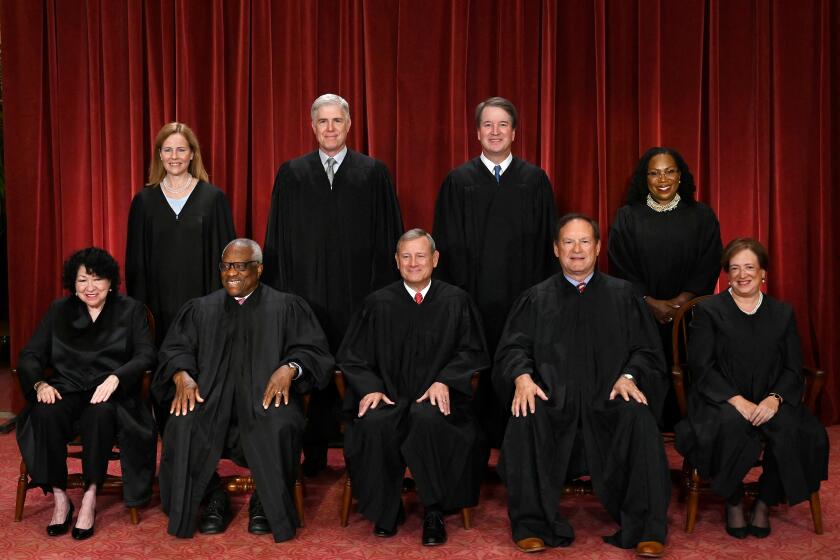California to Grow Faster Than Nation as Whole : Big Shift Among Ethnic Groups Seen by 1995
- Share via
California will continue to show much faster population growth than the nation through 1995 as immigrants leave home and baby boomers trade in singles bars for family cars, according to a new study by the Center for Continuing Study of the California Economy.
But while the boom will mean more people to buy cars, houses and cotton socks, it will also bring significant demographic changes--more minorities, an aging population--and potential problems, the report said, which will be released today by the private, independent Palo Alto-based research group. For example, a serious mismatch could develop between the skills possessed by California’s future labor force and those demanded by an increasingly technological economy, said the study, which is intended to update the outdated 1980 Census.
“In terms of housing people and educating people and building roads . . . there are going to be more people coming in the eight years (from 1987 to 1995) than ever,” said Stephen Levy, senior economist for the research group. “That’s a lot of folks, and 70% will be Hispanic and Asian.”
California’s population will jump slightly more than 17% to nearly 32 million residents in 1995, the study said. The nation as a whole will muster a 6.9% population growth during the same period from 1987 to 1995.
The Los Angeles basin--defined as Los Angeles, Orange, Riverside, San Bernardino, Ventura and Imperial counties--will grow 15.7%, while San Diego County’s population will increase 18.4%. The San Francisco Bay area will surge 20.6%, partly because the region is creating more jobs than the current population can absorb. The smaller Sacramento region will also enjoy strong growth--a projected 22.7%.
Push by Immigration
“Los Angeles, even though it will grow a little slower (than some other regions), will still grow twice as fast as the nation,” Levy said. “The numbers are just going to be overwhelming.”
Population growth in the state is being pushed by immigration--both legal and illegal--and domestic migration, which was not much of a factor in the late 1970s and early 1980s, the study said.
What’s more, there has been an increase in minority populations with large multifamily households, more women are entering the child-bearing years or have stopped putting off having children. The result is a reversal in California--but not nationwide--of the decades-old dominance of non-family households, defined as one-person households or households of two or more unrelated persons, the report stated.
Family households are projected to increase by 23.2% from 1987 to 1995, while non-family households will rise by 16.9%, the study said. In the United States, a small increase in the share of non-family households is predicted.
“We’re moving out of a singles age and into a family age,” Levy said. “The baby boomers have aged, and they’re all now getting married, by and large.”
But formation of new households in California has lagged population growth because Latinos and Asians, particularly recent immigrants, often live in large multifamily households.
California’s ethnic composition will change substantially by 1995, with the Latino population growing to 7.6 million, up nearly 70%, and the Asian population increasing to 3.8 million, up 140%. During the same period, the Anglo population will increase in numbers but will decline as a percentage of the total--to 57.5% from 66.6%.
Matching Skills
By 1995, Los Angeles, which is both the nation’s largest Latino and Asian regional market, will be on the verge of becoming the first region in the country where minorities will make up more than 50% of the population, the study said. In 1995, Latinos, Asians and blacks will account for 43.5% of the region’s population.
The changing composition of the population could create a “huge problem” if the education and training possessed by workers, many of whom will be minorities, do not match the skills demanded by an increasingly technological economy in California, Levy said.
“The key is to have upward mobility for the people who are already in the labor force,” he said. “Otherwise, everybody will stack up at the bottom. It’s bad for them but it’s also bad for the economy.”
As baby boomers get older, the 35-54 age group will increase 40% between 1987 and 1995, according to the study. But the 18-35 age group--those who enter college, the military and the work force--will shrink, which “has fairly profound implications for the institutions that hire those folks,” Levy said.
The period will also see an explosion in the number of elementary school age children, with more than 100,000 youngsters statewide entering school each year.
ETHNIC GROUPS California Population Growth 1987-95 Asian & Other 27.7%
Hispanic 37.4%
Non Hispanic White 31.0%
Black 3.8%
Legal Immigrants By Country of Origin 1985-86
in thousands
Mexico 30.8Philippines 29.1
Vietnam 13.2
Korea 9.8
China 9.4
Iran 9.1
Taiwan 6.1
El Salvador 5.5
Cambodia 5.2
More to Read
Get the L.A. Times Politics newsletter
Deeply reported insights into legislation, politics and policy from Sacramento, Washington and beyond. In your inbox twice per week.
You may occasionally receive promotional content from the Los Angeles Times.










